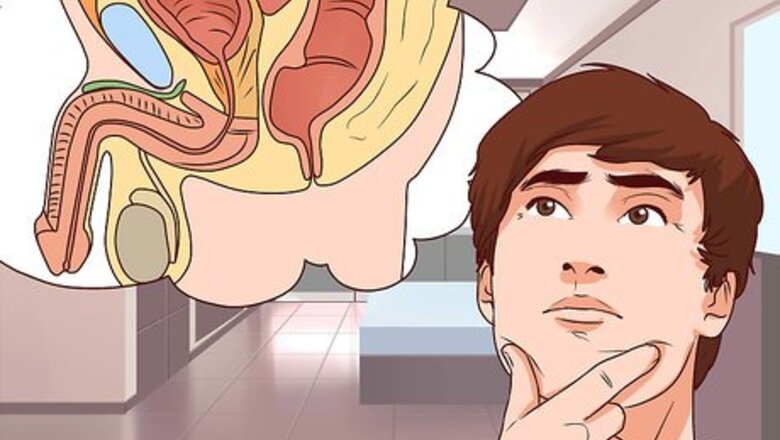
views
Learning the Details of Vasectomies

Learn the overview of the procedure. The vasectomy is a simple surgery that will cut the tubes carrying sperm to be mixed with semen. It has been proven effective as a method of birth control for males and the vasectomy is usually an outpatient procedure, using only a localized anesthetic. Vasectomies are considered permanent. Although some may be reversible, there are no guarantees. Some people save a sample of sperm in case they would like to fertilize an egg in the future. Make sure you understand that you will likely never have children in the future after your vasectomy. Vasectomies have a low risk of complications. You will still need to practice safe and protected sex, as a vasectomy will not protect you against any sexually transmitted infections. Full recovery takes, on average, a week.

Understand the details of the procedure. The main vasectomy technique in use today is known as “percutaneous no-scalpel vasectomy”. All vasectomy procedures will target the same area, tubes known as the vas deferens. These tubes will be located, exposed, cut, tied, and then secured inside the scrotum to heal. You can expect the entire procedure to take around thirty minutes. Your doctor will first apply a localized anaesthetic. This will numb the area and eliminate any pain. The vas deferens are then located by your doctor. This is a simple step which your doctor is able to find the vas deferens simply by feeling for them. A small and specialized tool is used next to make a hole in the skin of the scrotum. This hole will allow your doctor to access the vas deferens directly. The vas deferens, once exposed, will be cut and then tied. By cutting and tying these tubes, sperm are prevented from leaving the body, eliminating the chances of reproducing. Modern techniques cause very little bleeding and no stitches should be required.

Understand the risks. While most vasectomies are performed without problem, certain risks do exist. To make a fully informed decision about getting a vasectomy, you should understand these risks before scheduling your appointment. Side effects that can occur immediately after the surgery: Bleeding. Blood may appear in semen, at the site of your vasectomy, or a blood clot may form inside the scrotum. Bruising or swelling at the site of the surgery. Discomfort or mild pain. Infection, as with any surgery, is a possibility. Long term complications that may occur are: Chronic pain, which is rare, may occur after your vasectomy. Fluid build-up, or inflammation resulting from leaking sperm. Pregnancy, in the rare case that the vasectomy failed.
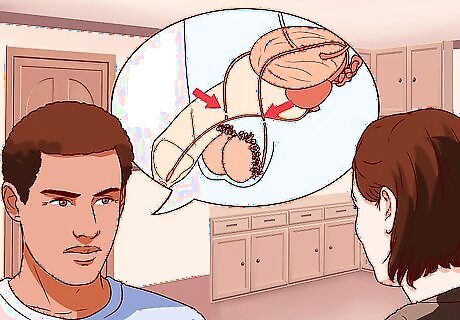
Talk your plans over with your partner. If you are in a relationship, and are planning on getting a vasectomy, discuss this with your partner. Ultimately the choice will be your own, however, since this decision impacts both parties, it's best to reach the decision together. You and your partner should be completely confident in your decision not to have anymore children. Although you can get a reversal, the success rate is only about 50%, and reversals aren't covered by insurance.
Preparing for the Vasectomy and After
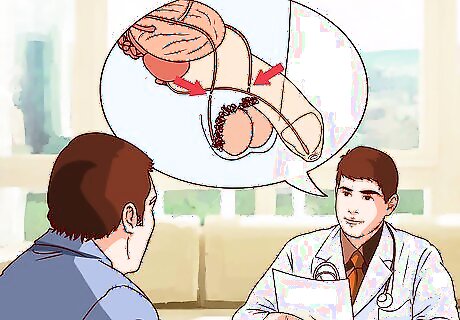
Know what to tell your doctor. When you schedule an appointment with your doctor to discuss your vasectomy, you should come prepared with certain facts about your own medical history. Keeping your doctor informed will help determine if the procedure will be safe and effective for you. Talk to your doctor about the following issues: Any history with excessive bleeding or blood disorders. As this is a surgery, any issues with blood loss need to be discussed. If you have any allergies, specifically to anaesthetics. Anaesthetics will be used during the vasectomy, and your doctor will need to know if you are unable to receive them. Inform your doctor if you have any skin diseases, especially on or around the scrotum. If you regularly use aspirin or any other medication that thins the blood. Any previous injury, surgery, or any current or repeat infections of the male genitalia or urinary tract.
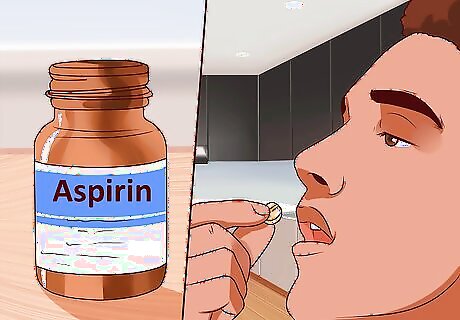
Prepare for the surgery. At least a week before your vasectomy you will want to start taking steps to prepare. Taking these steps will help make your surgery be a successful and easy one. Stop taking any any medication that might thin the blood, which includes aspirin, warfarin, heparin and ibuprofen. Trim body hair and clean the area that will be worked on. Find a pair of tight or supporting underwear to bring with you on the day of your surgery. This will help minimize swelling and support the area after the surgery. Find someone to drive you home from the surgery. This is to minimize aggravating the areas affected by the vasectomy.
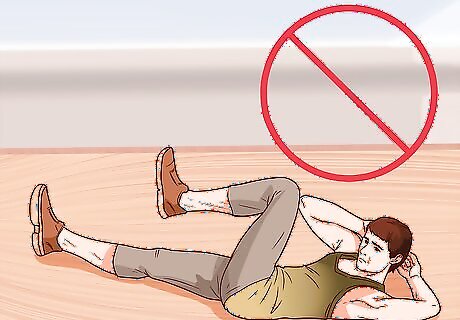
Perform proper after-care. After your surgery, you will need to practice proper after-care techniques. Plan to rest for two to three days. Although modern vasectomy techniques cause minimal discomfort, there are some things you can do to speed along the healing process. If you develop a fever or signs of infection, seek medical help immediately. Support the scrotum, either using a bandage or supportive underwear, for 48 hours. Keep the area cool by using ice packs for the first 48 hours. This helps reduce swelling or inflammation. Avoid physical activity for at least one day after the surgery. Too much activity can cause injury and bleeding in the scrotum. Avoid bathing or swimming for, at minimum, one day after the surgery. Avoid heavy lifting for seven days. You can return to work after 1-2 days if you have a desk job, but if your job is more physical in nature, it's best to take several days off before you return.
Wait seven days to have sex. If you engage in sexual intercourse before a week has passed, you may notice pain and blood in your ejaculate. You also still may have viable sperm in your semen, which can result in pregnancy. Because the tubes still have sperm in them a man needs to ejaculate 20 time before birth control is effective. Continue use of birth control until your doctor has confirmed that your vasectomy has been successful. Follow up includes a sperm count 3-4 months after the procedure to check and see how many sperm the man has in his sample. The couple can then stop short term birth control. The vasectomy can sometimes be reversed, but this does not always work.

















Comments
0 comment